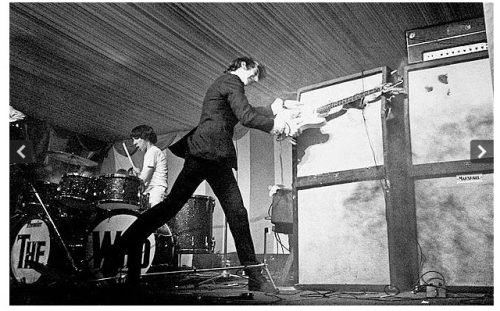In the pantheon of rock music, few acts are as electrifying and emblematic as the destruction of a guitar on stage. This act of rebellion, raw energy, and sheer audacity encapsulates the spirit of rock and roll, pushing the boundaries of performance art and leaving an indelible mark on the audience. Guitar destruction is not just a spectacle; it’s a statement—an explosive declaration of freedom and defiance.
Among the many icons of rock history, Pete Townshend of The Who stands out as the pioneer of this audacious tradition. His relentless smashing of guitars became a hallmark of The Who’s live performances, transforming a moment of apparent chaos into a powerful artistic expression. This article delves into the origins of Townshend’s guitar destruction, exploring its artistic roots, cultural impact, and enduring legacy in the world of rock music.
Early Influences
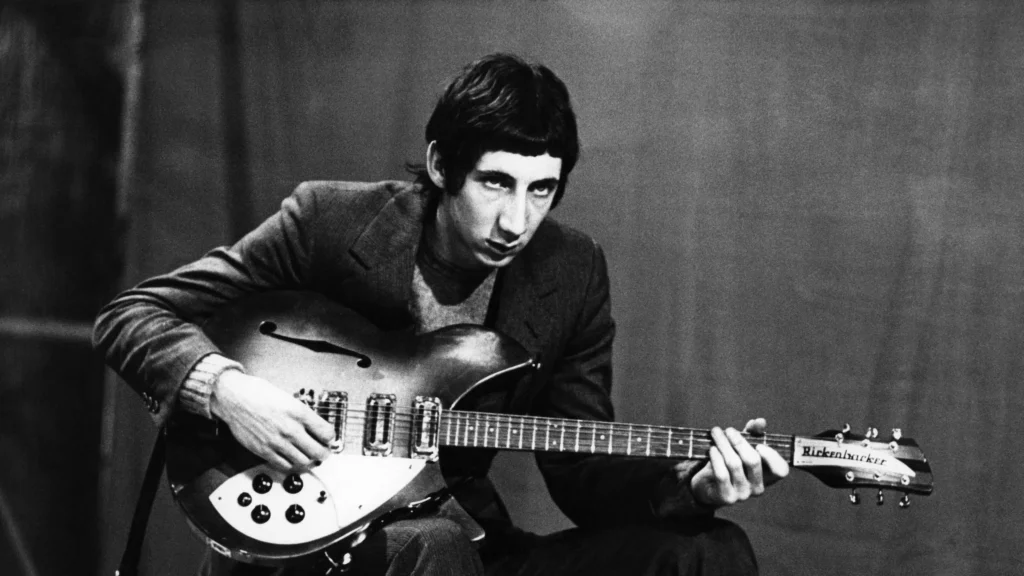
Background
Pete Townshend was born on May 19, 1945, in Chiswick, London, into a musical family. His father, Cliff Townshend, was a professional saxophonist, and his mother, Betty, was a singer. Surrounded by music from an early age, it was almost inevitable that Townshend would develop a deep passion for it. He attended Acton County Grammar School, where his interest in rock and roll began to take shape. The rebellious spirit of rock music resonated with Townshend, who found solace and identity in its raw energy and emotional intensity.
Art School Influence
In the early 1960s, Townshend enrolled at Ealing Art College, a period that profoundly influenced his artistic development. At Ealing, he was introduced to a variety of avant-garde concepts, including the theories of auto-destructive art pioneered by artist Gustav Metzger. Auto-destructive art involved creating art through processes of destruction, challenging traditional notions of art creation and permanence. This concept struck a chord with Townshend, aligning perfectly with the burgeoning ethos of rock music as a form of rebellion and self-expression.
Metzger’s ideas inspired Townshend to incorporate destruction into his performances, not just as a gimmick, but as a meaningful act of artistic expression. The art school environment encouraged experimentation and breaking boundaries, which Townshend translated into his onstage persona. His guitar smashing was a physical manifestation of auto-destructive art, turning a musical performance into a transformative experience that transcended mere entertainment to become a visceral, almost ritualistic event.
The First Smash
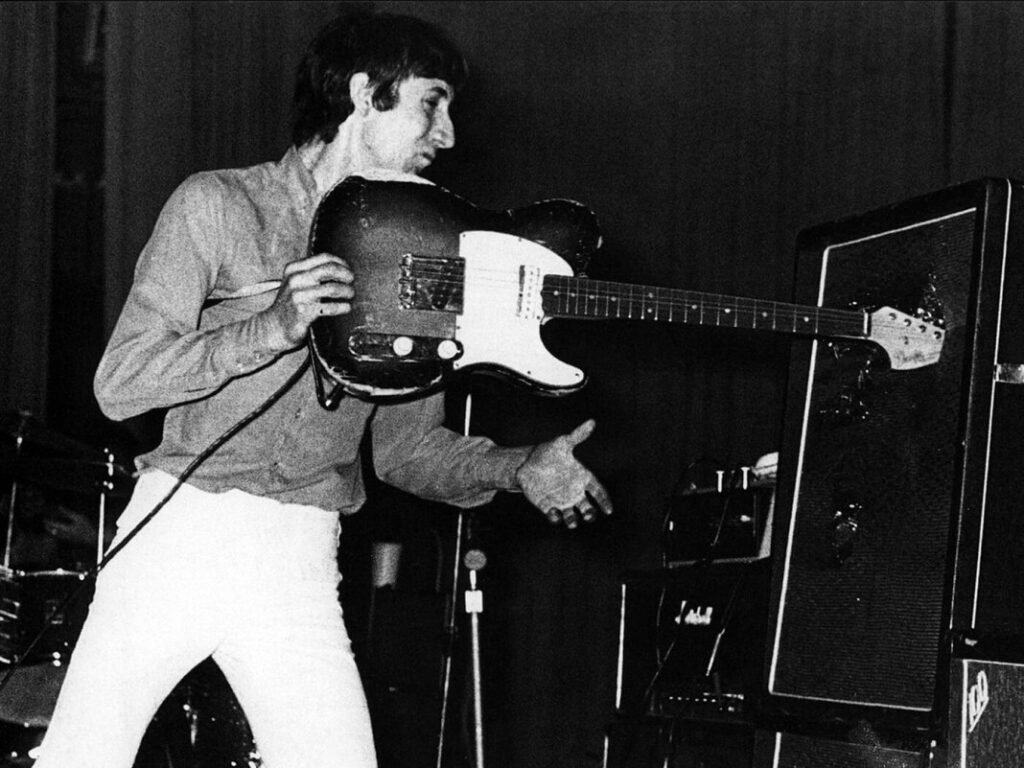
Event Description
The first instance of Pete Townshend smashing his guitar on stage occurred during a performance at the Railway Tavern in Harrow, London, in 1964. The Who were still a fledgling band, experimenting with their sound and stage presence. During the performance, Townshend’s Rickenbacker guitar accidentally hit the low ceiling, causing damage to the instrument. Frustrated by the incident and driven by a surge of adrenaline, Townshend decided to make a spectacle out of the mishap. He proceeded to smash the guitar against the stage floor, breaking it into pieces. This unplanned act of destruction was spontaneous and chaotic, yet it captivated the audience, turning a moment of frustration into a raw display of energy and emotion.
Reaction
The audience’s reaction was immediate and electric. Shock and excitement rippled through the crowd as they witnessed something entirely unexpected and unprecedented. What could have been seen as an accident or a tantrum was instead perceived as a powerful act of rebellion and defiance. The visceral energy of the moment resonated deeply with the audience, many of whom were young and eager to embrace the rebellious spirit of rock and roll.
Townshend’s bandmates were initially stunned by his actions. Roger Daltrey, John Entwistle, and Keith Moon watched in astonishment as Townshend obliterated his instrument. However, they quickly recognized the potential of this act to elevate their performances and set them apart from other bands. The destruction of the guitar became a symbolic gesture, representing the breaking of musical and societal conventions. This incident marked the beginning of a defining feature of The Who’s live shows, establishing Pete Townshend as a pioneering force in rock performance art.
Cultural and Artistic Impact
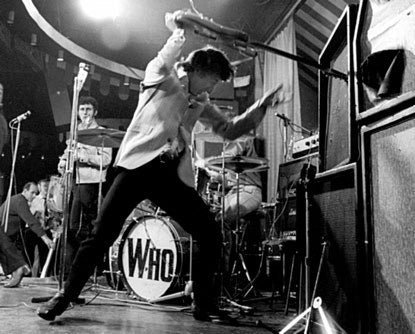
Symbolism
The act of smashing a guitar on stage transcended mere theatrics to become a potent symbol of rebellion and defiance. In the 1960s, a decade marked by social upheaval and a quest for new forms of expression, Pete Townshend’s destruction of his guitar resonated deeply with the youth and the burgeoning counterculture. The guitar, an emblem of musical creativity and freedom, being shattered into pieces, represented a bold rejection of the status quo. It was a visual and auditory declaration that art and music could be ephemeral, chaotic, and destructive.
For many young people, disillusioned with societal norms and the rigid structures of the past, Townshend’s guitar smashing was a cathartic release. It symbolized the breaking down of barriers and the challenging of conventional values. This act mirrored the tumultuous spirit of the 1960s, reflecting the anger, frustration, and desire for change that permeated the era. It was a raw expression of emotion and an invitation for the audience to embrace their own rebellious instincts.
Influence on Rock Culture
Townshend’s guitar destruction had a profound and lasting influence on rock culture, setting a precedent for future generations of musicians. It wasn’t long before other artists began to incorporate similar acts of destruction into their performances, each adding their own unique twist to the spectacle. Jimi Hendrix famously set his guitar on fire at the Monterey Pop Festival in 1967, blending Townshend’s raw aggression with his own brand of flamboyant showmanship. This act became one of the most iconic moments in rock history, further cementing the idea that destruction could be a form of creation in the world of music.
The influence extended beyond individual performances to the very ethos of rock and roll. The genre, already known for its rebellious nature, embraced the concept of pushing boundaries and defying expectations. Bands like Nirvana in the 1990s, with Kurt Cobain often ending shows by destroying his guitar, continued this legacy, using destruction as a powerful form of self-expression and a statement against commercialism and conformity.
Moreover, the act of smashing instruments became a symbol of the intense emotional and physical commitment that rock musicians brought to their art. It underscored the idea that rock was not just music, but a visceral, immersive experience that could evoke profound emotional responses. This commitment to raw, unfiltered expression became a cornerstone of rock culture, influencing how live performances were conceived and executed.
Evolution of the Act
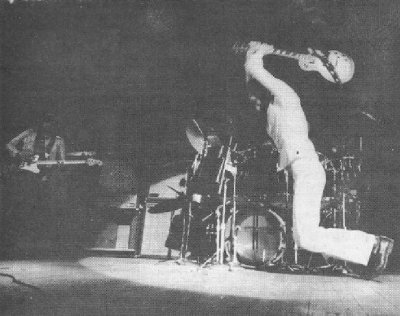
Refinement
Following his initial spontaneous guitar smashing incident in 1964, Pete Townshend recognized the powerful impact it had on audiences and began to refine and integrate this act into The Who’s performances. What started as a moment of frustration quickly evolved into a deliberate and theatrical element of their shows. Townshend’s guitar destruction became a signature move, symbolizing the chaotic energy and rebellious spirit of the band.
To enhance the dramatic effect, Townshend started to carefully choreograph the smashing of his guitars, ensuring it occurred at climactic points during performances. This not only heightened the emotional intensity of the act but also provided a sense of anticipation for the audience. Townshend experimented with different techniques and tools, sometimes using feedback and distortion to create a sonic chaos that mirrored the visual destruction. Each performance was unique, with Townshend’s theatrical flair ensuring that the act remained fresh and impactful.
The smashing of guitars became a ritualistic conclusion to The Who’s concerts, representing a climactic release of energy and emotion. Townshend’s integration of this act into the band’s performances was not just about shock value; it was about creating a visceral, unforgettable experience for the audience. The act symbolized the band’s commitment to pushing the boundaries of rock music and live performance.
Notable Performances
Several key performances stand out where Townshend’s guitar destruction was particularly impactful:
The Railway Tavern (1964): The inaugural guitar smash that set the stage for what would become a defining element of The Who’s live shows. The spontaneous nature of this performance made it legendary.
Monterey Pop Festival (1967): At this iconic festival, The Who’s performance culminated in Townshend’s aggressive destruction of his guitar, followed by Keith Moon’s demolition of his drum kit. This act of chaos was immediately followed by Jimi Hendrix setting his guitar on fire, marking a pivotal moment in rock history.
Woodstock (1969): During their performance at Woodstock, The Who delivered a powerful set that ended with Townshend smashing his guitar. The sheer scale and historical significance of Woodstock amplified the impact of this act, embedding it in the collective memory of rock and roll history.
Smothers Brothers Comedy Hour (1967): On this televised performance, The Who ended their set with Townshend smashing his guitar. An unexpected explosion from Keith Moon’s drum kit added to the chaos, causing Townshend to temporarily lose his hearing. The broadcast brought the wild energy of The Who’s live performances into American living rooms, solidifying their reputation for unpredictability and destruction.
Live at Leeds (1970): Often regarded as one of the greatest live rock albums, “Live at Leeds” captured the raw energy of The Who. The album features Townshend’s guitar destruction, showcasing the act as a central element of their live identity.
A Destructive Legacy
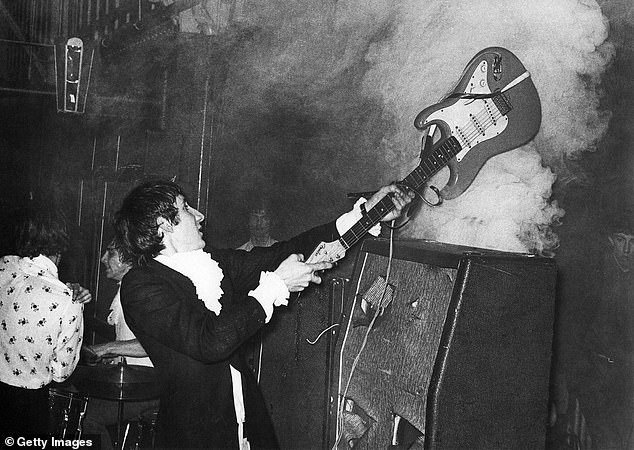
Long-term Impact
Pete Townshend’s guitar destruction left an indelible mark on rock music and live performances, cementing his status as a pioneer of rock theatrics. This act of rebellion and raw energy became a symbol of the countercultural spirit that defined the 1960s and beyond. Townshend’s guitar smashing was not merely a moment of onstage aggression but a deliberate artistic statement that challenged the norms of music performance. It encapsulated the essence of rock and roll—unpredictable, chaotic, and emotionally charged.
The long-term impact of Townshend’s guitar destruction can be seen in several key aspects of rock music. Firstly, it redefined the expectations of live performances. Audiences began to anticipate not just musical prowess but also a visual and emotional spectacle. This led to an era where concerts became immersive experiences, incorporating elements of theater, pyrotechnics, and elaborate staging.
Secondly, Townshend’s actions highlighted the potential for destruction as a form of creation in art. By breaking his instrument, he was making a statement about the impermanence of art and the cyclical nature of creation and destruction. This philosophy resonated with many artists and musicians who sought to push boundaries and explore new forms of expression.
Lastly, Townshend’s guitar smashing influenced the ethos of rock music itself. It underscored the genre’s rebellious nature and its capacity to serve as a vehicle for profound emotional and social commentary. This legacy of defiance and innovation continues to inspire musicians and performers to this day.
Modern Influence
Contemporary artists have both been inspired by and responded to Townshend’s iconic act of guitar destruction in various ways. The raw energy and spectacle of smashing an instrument have been emulated by numerous musicians seeking to capture the same sense of rebellion and emotional intensity.
Kurt Cobain of Nirvana is one of the most notable examples. Cobain, who often ended Nirvana’s shows by destroying his guitar, cited Townshend as an influence. For Cobain, this act was a visceral expression of his inner turmoil and a rejection of the commercial pressures surrounding him and his music. It became a defining feature of Nirvana’s live performances, much like it had for The Who.
Other artists, such as the members of Green Day, have also incorporated instrument destruction into their performances, using it as a means to convey their punk rock ethos and connect with audiences on a raw, emotional level. Billie Joe Armstrong, the lead singer, and guitarist of Green Day, often smashes his guitar at the end of particularly intense performances, channeling the spirit of Townshend’s defiance.
